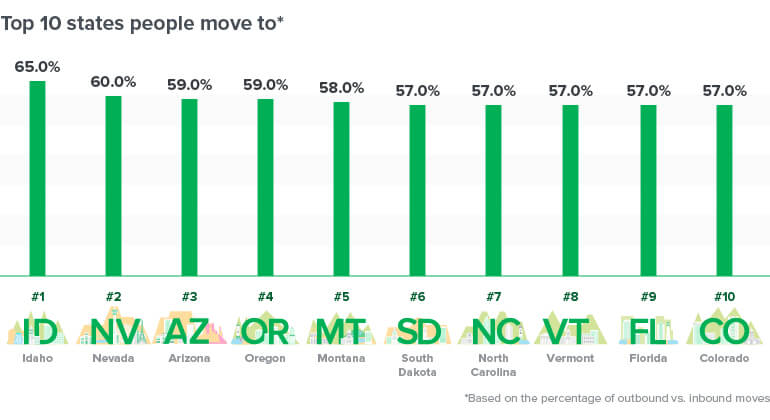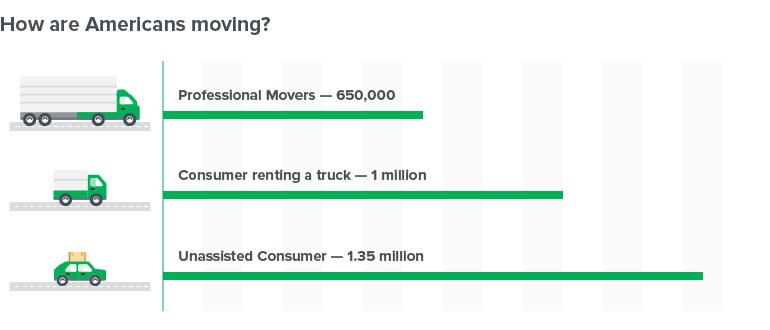1Average of numbers since 2010 from Census Data
2United States Census Bureau, “CPS Historical Migration/Geographic Mobility Tables”
3American Moving and Storage Association, “About Our Industry”
- Illinois – 66%
- Alaska – 65%
- New Jersey – 63%
- North York – 62%
- West Virginia – 60%
- North Dakota – 60%
- Connecticut – 58%
- Kansas – 57%
- Pennsylvania – 57%
- Maryland – 55%
4American Moving and Storage Association, “About Our Industry”
- Idaho – 65%
- Nevada – 60%
- Arizona – 59%
- Oregon – 59%
- Montana – 58%
- South Dakota – 57%
- North Carolina – 57%
- Vermont – 57%
- Florida – 57%
- Colorado – 57%
5 United States Census Bureau, “CPS Historical Migration/Geographic Mobility Tables”
- To relocate to a new or better home — 16%
- To establish their own household — 11.5%
- For “other” family reasons — 11.3%
- For a new job or job transfer — 9.9%
- To find cheaper housing — 8.3%
- For “other” housing reasons — 7.6%
- To own their home instead of rent — 7.3%
- To be closer to work or have an easier commute — 5.5%
- Because of a change in marital status — 5.1%
- For other unspecified reasons — 5%
- To attend or leave college — 3%
- Wanting a better neighborhood with less crime — 2.8%
6 United States Census Bureau, “CPS Historical Migration/Geographic Mobility Tables”
7 American Moving and Storage Association, “About Our Industry”
8 American Moving and Storage Association, “About Our Industry”









